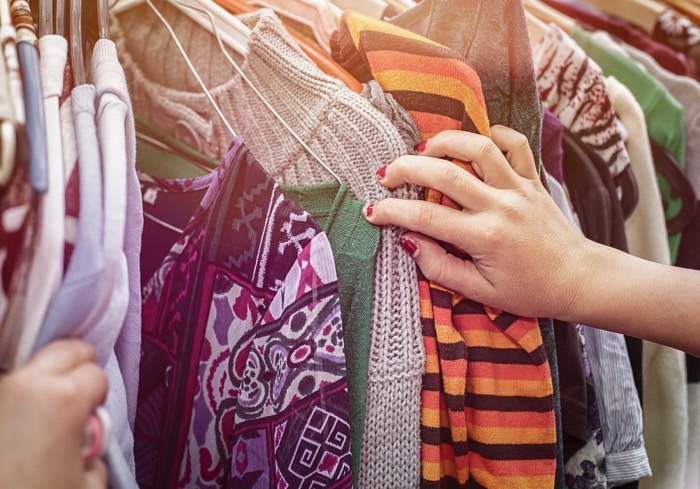
For many consumers, secondhand is becoming their first thought when it comes to clothes shopping.
It’s a movement that’s been gaining momentum since the recession in 2008. Today, one in three women are reporting that they shopped secondhand within the past year, according to research by thredUP. That’s a total of 44 million shoppers in 2017.
Compare that to 35 million the previous year, and it’s clear this trend is not only on the rise, it’s growing dramatically, with the potential to reach $41 billion in value by 2022.
Keep in mind that “thrift” and “resale” are no longer synonymous with only Savers, Goodwill and the Salvation Army. There are resellers like thredUP and Poshmark that move a wide range of brands that are still in good condition, while others such as TheRealReal sell only luxury brands.
Indeed, some of the biggest buyers in resale happen to be millionaires. While it’s clear why those with more modest incomes may choose to thrift shop — it gives them access to brands they couldn’t otherwise afford — the motives for shoppers who don’t need a discount are less clear.
The thredUP report digs into the reasons for the resale boom over the past decade and makes an argument for why this trend will only continue to grow.
The Thrill of the Hunt
Thrifting attracts a few categories of shoppers that share one key characteristic, and that is their love for the hunt.
Maybe they love fashion and get a thrill out of finding the perfect piece on a rack, leading to impulse buys. This is most common among younger shoppers aged 18 to 24, for whom nearly half of all purchases are made impulsively. This demographic is also most likely to discard clothing after one to five wears — leading them back to the store for more.
Another draw is the allure of constant new arrivals and brands. For a shopper who loves the thrill of the hunt, one or two shopping trips per season are more than enough to see everything the mall has to offer due to slow turnover rates, but at thrift stores, new items arrive daily. On digital resale platforms, daily new arrivals can number in the thousands.
Then there are those who just love a bargain. These shoppers may also frequent off-price stores such as TJ Maxx, Marshalls and Ross. With thrifting, they can often spend even less than they would at those stores, while realizing more overall retail value. And who doesn’t want to get a bigger bang for their buck?
According to thredUP’s research, buying used instead of new for one year can save consumers around $2,420. If that’s hard to cognize, consider that $100 at a thrift store could easily buy a shopper five or more dresses priced around $18, while shopping at Target — generally considered “affordable” — would net them only three at $30 a pop.
At Nordstrom Rack, the same amount could effectively buy one dress (all right, one and a half, but what’s a shopper going to do with half a dress?). Online at Net-A-Porter, that shopper could afford less than half of a single dress at an average price of $440 each.
The sum of all those numbers is a deal few bargain hunters could resist.
Greater Good
Thrifting is good for consumers’ wallets, but according to thredUP, that’s not all it’s good for — and this may account in part for its growing popularity.
First, thrifting offsets the rampant throw-away culture. Remember those twenty-somethings throwing away clothes after one to five wears? That’s not just a millennial problem: More than one third of women do the same thing.
Yet millennials especially say they want to help the environment and would consider shifting to thrift to achieve this — last year, 40 percent of them did.
After petroleum, the fashion industry is the world’s biggest polluter, and constant demand for new clothes forces perpetual production cycles that only add to this waste. ThredUp notes that extending a garment’s life by buying secondhand can keep it out of the trash for an additional two years and reduce environmental footprints as drastically as 73 percent, slashing carbon dioxide emissions as well as water and electricity use.
In short, thrifting may be the exact opposite of — and could, with enough adoption, provide an antidote to — the fast fashion industry without sacrificing profits, since 75 percent of consumers say they’re more likely to buy from eco-friendly brands.